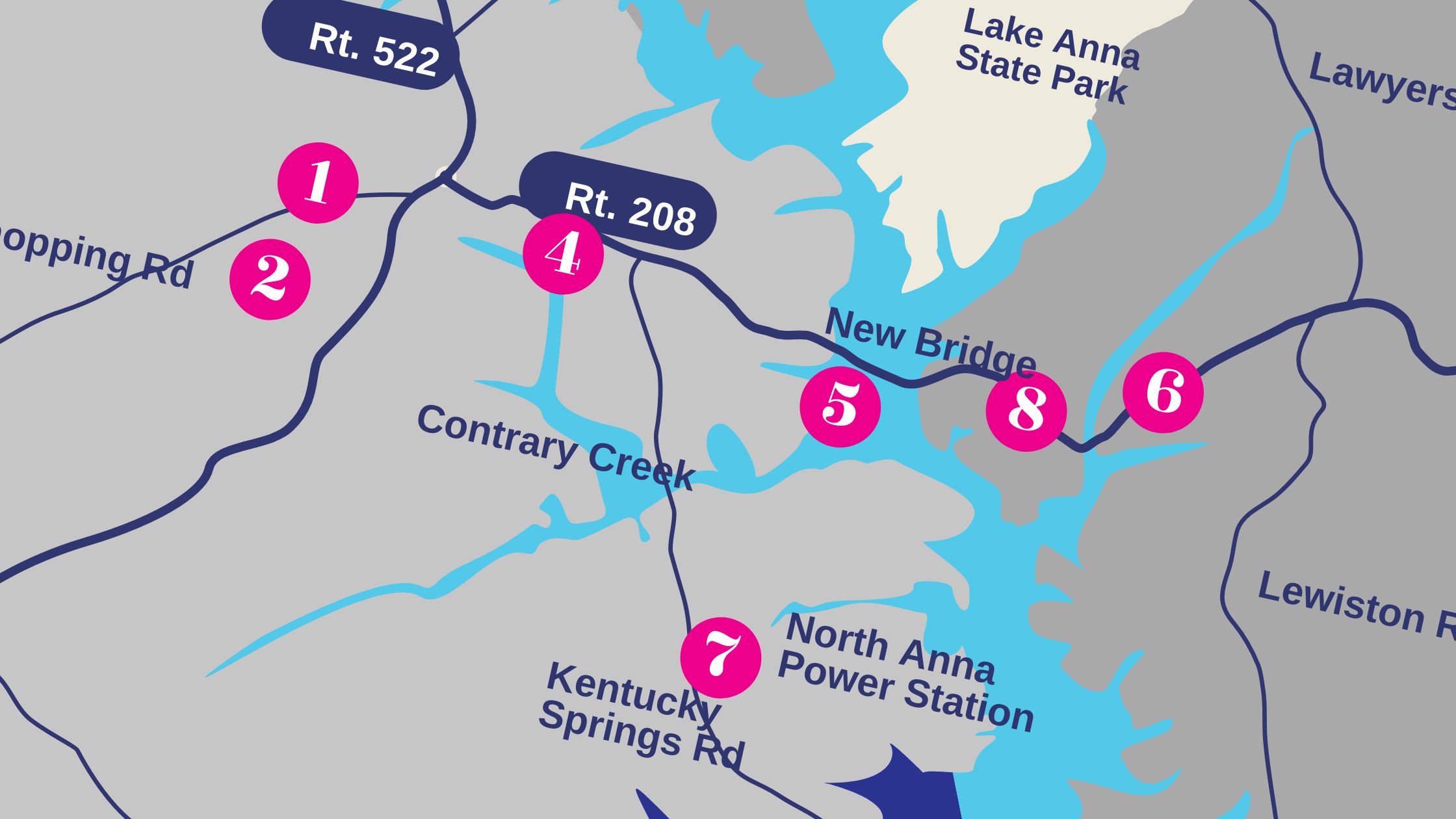
I still remember when LiveJournal came out in 1999 after the word “weblog” was dropped in favor of simply “blog.” It was the first time in history that everyday people like me, with no coding experience, could share information on the web. A beautiful expression of self, and the first opportunity for people from all over the world to read and comment on your topics.
If only we knew in 1999 what we know about blogging today.
Since that time, the opportunity has changed. Content is not special anymore, it’s a commodity – produced in bulk, valued as cheaply as possible. Why? Because it’s in such high demand. Let’s take a look at the facts:
– An estimated 86% of businesses are using content marketing and competing for readership on the same platforms
– In the first quarter of 2021, there were over 5 million new blogs being published on WordPress daily
– About half of marketers feel they are reaching less than 25% of their addressable market online
The hard truth is that people are bored with the content. Why? Because most of it is just more of the same. At least 1999 gave content creators the ability to personalize the reader’s experience and give it some flair. (Think animated flash pages, scrolling marquees, awkward animations, and cheezy dancing baby graphics).
Let’s take a deep dive on some blogging basics that will not only put some personality back into content, but also guarantee that it will get read, shared, and possibly even generate leads (lookout!).
Adding the salt: creating value-based content
With the growing need for content, so came an abundance of cheap writers. The average digital marketing company outsources its content to a variety of writer types and pays a few cents per word. Real estate agent near me” or “Sell my house fast for cash Roanoke” become the keywords that bring search engine traffic to your website, and “How to have curb appeal” or “First time home buyer’s guide” is what gets shared on Facebook and Twitter.
Marketers can buy long-form content within a week all for about $50 or less. So, what’s the problem? It will be cookie-cutter, more-of-the-same, bland and fluffy… garbage. It may help with search results but won’t offer any real value to real humans.
If it isn’t feeding an actual audience then you’re going to be left with a hill of beans.
We need to shift our thinking: value is the salt to your content. Making your content taste good by giving your audience substance is the only way to make content special again.
So, I can give you an entire list of how-tos, and formulas for making great headlines and how to use keywords to get search engine results. But if you really want to make a difference… all you need to do is add value to your content. It’s that simple.
11 questions to ask when you want your content to be worth reading:
- Does it speak directly to your target audience or personas?
- Does it hit a pain point or give them part of a solution they are looking for?
- Is it written by someone who has experience in the industry? An expert.
- Does it offer real insights and information that solves a problem?
- Does it include tools and resources that they will actually use?
- Will they email it to themselves, print it, or save it for later?
- Will they share it on social media as something valuable for their friends?
- Is it meaningful to them on a deeper level?
- Does it address any of Maslow’s hierarchy of needs?
- Is it actually even interesting??!
- Is it something you would want to read?
If a piece of content takes more than it gives, then you know it’s not providing value. It needs to include real solutions and resources, or be able to reach your audience on a deeper level.
The Anatomy of a Food Blog (and why that matters)
Do you know what really burns my biscuits? Food blogs. Can I not get a simple recipe without having to read 1000+ words of some baker babbling on about how they made the cake, why they made the cake, the history of the cake, how to buy the ingredients with coupons, how to freeze, store it, can it, and also how delicious it was for everyone in the family, in order of birthright?
When I read a food blog, I literally scroll as fast as I can down the page to get to the printable recipe card. That’s all that I want: a list of ingredients and suggested steps on making it. For me, that recipe is my honeypot – the reason I came. I would rather print that recipe than ever visit that webpage again.
But is there actual value in writing those extra 1000+ words leading up to the recipe? I may not like it, but apparently the rest of the world does… and that’s why it’s done that way.
Let’s take a look at the anatomy of a food blog and what goals it is actually achieving:
- The format is the same. Every food blog has the recipe on the left, a sidebar on the right with the author’s photo and mini-bio, a subscription popup, and a shit-ton of ads, (yes, shit-ton is officially in Webster’s dictionary and therefore I am allowed to use it here), eventually followed by a recipe widget and then the comments.
- The word count is high. The recipe blogs that are ranking have word counts above 1,000 but some are over 2,000.
- The recipe is a mini-guide and includes everything you could possibly need to know about it.
- It includes a honeypot: the recipe itself. This is the most valuable thing offered to us, the audience. It is a printable, save-able, sharable, comment-able piece of content.
- Photos, videos, and more photos. They all include a ton of media consisting of mostly photos but also video.
- They are written in first person and include stories or personal preferences.
- It is monetizing the audience through ads and affiliate links.
Aside from the nuisances of the ads and the long scrolling requirements, food blogs are successful because they give their readers something they can gnaw on: value. And guess what? Google will eat that up, too. So what lessons we can take away from food bloggers? What should we be doing that adds salt to our content?
Food blog takeaways that add value (salt) to content:
- Know what your audience is expecting and provide content in a similar format
- Serve up the word count, and more is better
- Include all of the tools and resources the reader needs to accomplish their goal
- Allow the reader to visualize their experience with photos and video
- Personalize it and make it relatable
- Include a “honeypot” (more on this later)
Just because I don’t personally like all the fluff that comes with recipe blogs, doesn’t mean that they aren’t providing real value. If you want proof of that, just look at the pages and pages of comments following the recipe card.
And, because the content is authentic and is packed with words, it is naturally going to get picked up by Google. Keep that in mind when you think about search: Google looks for value, too.
Bringing Sexy Back: giving content back its voice
I laughed, she laughed, the toaster laughed.
Content really does have a life of its own. In fact, the job of content is to connect with the reader and create a picture for them (a picture is worth 1,000 words, right?!). Blogging isn’t a college essay, folks.
ng>To give content personality, it needs two things:
- Brand voice, and
- Writer’s voice
Brand Voice
Imagine you go to a cocktail party and your brand is a person. What personality and dynamic does it add to the party? Brand voice is the personality counterpart to the look and feel of your brand. It gives your logo meaning and purpose, it brings vision to your marketing efforts, and it communicates clearly to all of your audiences.
The brand voice also makes content sexy again. Maybe sexy isn’t part of your brand voice, but it has other characteristics like authenticity, passion, or playfulness – or honesty, seriousness, and care.
Hubspot speaks to its customers in a tone that is usually informal, but genuine and never stuck up. Harley Davidson’s brand voice, on the other hand, is incredibly confident and passionate. Can you guess what Coca-Cola’s brand voice is? My guess would be down-to-earth and fun-loving.
Don’t know what voice your brand has? Then either it doesn’t have one, or it needs some massaging.
Writer’s Voice
Especially if the blog is focusing on individual authors, the writer’s voice is made up of the unique way that they communicate mixed with their writing style. Most importantly, a writer’s voice helps the content come to life and connect with the reader.
Imagine an article on the 10 most fascinating bucket list adventures on your Harley Davidson, written by an experienced male motorist who loves adventure but is a family man at heart. What do you think the writer would sound like? While this piece sounds like a fun read, think about the topics that need to be written even though they are flat, staticky, and just plain boring… like, types of funeral pre-funding plans (sorry, funeral director!), or the difference between Roth and traditional IRAs (OMG kill me now). How could those be written to connect with the reader and give the audience back some enjoyment?
Writing vs hiring writers
It’s important to note that you don’t have to be a “writer” to write, and you don’t have to have a defined voice to find it. There are several methods that people use to help them find their “voice” including Julia Camerons’ The Writers Way. But there is an even simpler method to learn how to write…
One of the most useful things I was taught on day one when I sat at my desk in Journalism 101, was the foremost method of learning to write. Can you guess what it was?
To learn to write, first, you must read.
What about hiring a writer? There are a wide variety of writers out there and a lot of price ranges. The rule of thumb is that the cheaper the content, the more rewriting you will have to do. But I’ve worked with writers who knock the socks off of any content that I could ever come up with and do it in the perfect brand voice. (Those ones don’t come as cheap). Keep in mind that any time you hire a writer you also need to do a plagiarism check. Even if they are your best friend…. trust me on this one.
The Meat of the Matter: how-to choose topics and write headlines
Some writers are so good, the topic doesn’t matter. But in a marketing world, if you want search traffic, high engagement, and shares – your topic definitely matters. But more than that, your headline matters.
Case in point. Before changing the name to first take at this article “Blogging basics: How to write articles guaranteed to earn the most shares” I started with this one: “how to write a successful blog.” Now, would you have read that?
I imagine “How to write a successful blog” would have included some basic tips like “write about what you love”, and “include photos and video” or “include a call to action.” While all of those things are true, it’s also more of the same! You will find those tips in almost every other article about blogging. Go ahead, look at this Google search and see what you find.
Researching topics that people want to read
The bigger discussion we need to have is really about your content strategy. A good content strategy will include a list and publishing schedule of all of your needed content: blogs, social posts, email marketing, content offers, etc. It will be well researched and include keywords.
Content strategy includes:
- keywords for search rankings
- foundational topic research and planning
- content offers that people can access by filling out a form
- buyer personas and buyer journey research
- lists of all of the possible questions your customers might ask – so that you can provide answers (see They Ask, You Answer by Marcus Sheradin)
You do need a content strategy, but these simple brainstorming tricks will get you generating topics right away:
- Look at search volume: you will need an SEO tool for this like SEMrush or simply Google’s keyword planner
- Pay attention to long-tail key phrases that are just barely ranking; this will give you insight into content that you can rank really quickly
- Look at trending topics: again, use SEMrush‘s content tool or a free topic tool like this one
- Brainstorm the most frequently asked questions from your customers
- Brainstorm truths in your industry that are uncomfortable to answer
- Think about some of the problems and pain points your customers are having: what’s keeping them up at night?
Examples of topics that have come out of these brainstorming methods:
- A professional guide to probate for bighearted real estate agents and investors: Earning 10% of the website traffic
- NFL Player Financial Advisor: the Importance of Wealth Management for Professional Athletes: Increased the length of time spent on this website by 25%
- What should I wear to a wake?: Written in 2017, has received over 79,000 organic visitors to the website and currently has an on-page readership time of over 4 minutes.
- How long does it take to learn a black belt?: Moved this website up to the #1 position in Google from position #28 for “black belt karate” and to the 9th position for “how long does it take to earn a black belt”; this was a long-tail key phrase that we targeted because we felt the website could rank quickly, and sure enough, it started ranking immediately – not only for the long tail word we targeted (how long does it take to earn a black belt) but also for a more desirable phrase (black belt karate)
- Will Zillow Buy My House: Writing about competitors (Zillow would be considered this company’s competitor) not only positions them to receive the first click but also allows them to talk about their differentiators and the downside of doing business with Zillow
Writing a clickable headline
Rule #1 with writing content: spend 80% of your time on the headlines. This generally applies to landing pages and copywriting in marketing… but the strategy of writing good headlines applies to blogging.
From the previous example, which one of these would you click?
- How to write a successful blog
- Blogging basics: How to write articles guaranteed to earn the most shares
Look at a few more examples…
- How to find buyers for your house
- How to wow buyers into making an offer above your asking price
Or
- The latest advances in preneed marketing
- Industry leadership: 5 consumer insights that will level up your preneed marketing
And
- Is embracing the probate niche right for you?
- Are you compassionate enough for the probate niche? [Empathy quiz]
The second headline in each set is built specifically to reach the pain points of the targeted consumer, includes keywords, industry language, brand voice, and last but not least – the right sentiment to get the point across.
Trust me, it was easy to write these headlines – because I use headline studio by coschedule. Try it, you might just get addicted! (No, unfortunately, that is not an affiliate link!)
Tips on writing clickable headlines:
- Use how-to’s, questions, or lists
- Add emotional and power words
- Make it skimmable
- Pay attention to word count: at least 7 and at most 15 (ish)
Final thoughts about winning blogging techniques
Over the years of reading, skimming, writing and talking about blogging – there are a few things I think you might want to know. Here goes!
Be truthful in blogging
This might seem pretty straightforward, but it’s worth saying: don’t make shit up. If you don’t know for certain something is true and if you cannot back it up with research, then don’t slant the content with your opinion. It’s just plain wrong and it really burns my biscuits.
Don’t talk about yourself
Personal anecdotes are totally acceptable. What I mean, though, is that your reader wants to hear and think about themselves, their situation and how to apply what they are learning to their own lives. So, don’t make it about you – make it about them.
Feed left and right brain personalities
That means use a variety of multimedia tools as well as data and graphs to reach your consumers.
- facts, figures, and tudies
- video
- photos
- infographics
Create a honeyhole & increase conversions
As a term that has been thrown around by various digital agencies, a “honeyhole” is basically a digital asset with a high-value resource, and yields a large number of visitors, shares, or whatever. In essence, it is something that your winnie-the-consumer-bear really, really wants or needs. A honey hole can be a tool that gets embedded in other peoples’ websites and gives you tons of backlinks, it can be an on-demand webinar that answers consumer questions instantly, or it can be a calculator for mortgage seekers.
My favorite honey hole example is Neil Patel’s Ubersuggest – a free keyword tool that is easy for anyone to use, even if you aren’t a marketer. (See what just happened there, he earned a backlink from me for absolutely nothing and he didn’t even have to ask).
Some honeyhole ideas:
- calculators
- quizzes
- downloadables (white papers, guides, etc)
- webinars
- trial
- demo
- contest
- course
- cheat sheets
- checklists
- kits
- data & research
- podcasts
- templates
- … you get the point!

Hi! I’m Jennifer Bailey and I partner with entrepreneurs who have massive ideas that could change the world. Most marketing is meaningless. Filled with empty promises, its only job is to bring in new traffic, new leads, and new customers. But I’ve drawn a line in the sand, and I’ve learned that marketing can do so much more than reach business goals and build profit. My methods give businesses the fire and soul they need to reach the right people, set the groundwork for sustainable relationships, and offer true value to the people on both the giving and receiving ends of marketing.
Subscribe for Updates
Sponsors
latest articles
Growth Boom: Lake Anna Sees Major Development Milestones

Roundabout Plaza Brings The Lazy Parrot, Pickleball and More in 2025

The Legacy of the Rose Valley Island Tree

The “Float and Rescue” Rubber Ducky of Lake Anna

The “Dog Days” of Summer

‘Wet Microburst’ Hits Lake Anna

I still remember when LiveJournal came out in 1999 after the word “weblog” was dropped in favor of simply “blog.” It was the first time in history that everyday people like me, with no coding experience, could share information on the web. A beautiful expression of self, and the first opportunity for people from all over the world to read and comment on your topics.
If only we knew in 1999 what we know about blogging today.
Since that time, the opportunity has changed. Content is not special anymore, it’s a commodity – produced in bulk, valued as cheaply as possible. Why? Because it’s in such high demand. Let’s take a look at the facts:
– An estimated 86% of businesses are using content marketing and competing for readership on the same platforms
– In the first quarter of 2021, there were over 5 million new blogs being published on WordPress daily
– About half of marketers feel they are reaching less than 25% of their addressable market online
The hard truth is that people are bored with the content. Why? Because most of it is just more of the same. At least 1999 gave content creators the ability to personalize the reader’s experience and give it some flair. (Think animated flash pages, scrolling marquees, awkward animations, and cheezy dancing baby graphics).
Let’s take a deep dive on some blogging basics that will not only put some personality back into content, but also guarantee that it will get read, shared, and possibly even generate leads (lookout!).
Adding the salt: creating value-based content
With the growing need for content, so came an abundance of cheap writers. The average digital marketing company outsources its content to a variety of writer types and pays a few cents per word. Real estate agent near me” or “Sell my house fast for cash Roanoke” become the keywords that bring search engine traffic to your website, and “How to have curb appeal” or “First time home buyer’s guide” is what gets shared on Facebook and Twitter.
Marketers can buy long-form content within a week all for about $50 or less. So, what’s the problem? It will be cookie-cutter, more-of-the-same, bland and fluffy… garbage. It may help with search results but won’t offer any real value to real humans.
If it isn’t feeding an actual audience then you’re going to be left with a hill of beans.
We need to shift our thinking: value is the salt to your content. Making your content taste good by giving your audience substance is the only way to make content special again.
So, I can give you an entire list of how-tos, and formulas for making great headlines and how to use keywords to get search engine results. But if you really want to make a difference… all you need to do is add value to your content. It’s that simple.
11 questions to ask when you want your content to be worth reading:
- Does it speak directly to your target audience or personas?
- Does it hit a pain point or give them part of a solution they are looking for?
- Is it written by someone who has experience in the industry? An expert.
- Does it offer real insights and information that solves a problem?
- Does it include tools and resources that they will actually use?
- Will they email it to themselves, print it, or save it for later?
- Will they share it on social media as something valuable for their friends?
- Is it meaningful to them on a deeper level?
- Does it address any of Maslow’s hierarchy of needs?
- Is it actually even interesting??!
- Is it something you would want to read?
If a piece of content takes more than it gives, then you know it’s not providing value. It needs to include real solutions and resources, or be able to reach your audience on a deeper level.
The Anatomy of a Food Blog (and why that matters)
Do you know what really burns my biscuits? Food blogs. Can I not get a simple recipe without having to read 1000+ words of some baker babbling on about how they made the cake, why they made the cake, the history of the cake, how to buy the ingredients with coupons, how to freeze, store it, can it, and also how delicious it was for everyone in the family, in order of birthright?
When I read a food blog, I literally scroll as fast as I can down the page to get to the printable recipe card. That’s all that I want: a list of ingredients and suggested steps on making it. For me, that recipe is my honeypot – the reason I came. I would rather print that recipe than ever visit that webpage again.
But is there actual value in writing those extra 1000+ words leading up to the recipe? I may not like it, but apparently the rest of the world does… and that’s why it’s done that way.
Let’s take a look at the anatomy of a food blog and what goals it is actually achieving:
- The format is the same. Every food blog has the recipe on the left, a sidebar on the right with the author’s photo and mini-bio, a subscription popup, and a shit-ton of ads, (yes, shit-ton is officially in Webster’s dictionary and therefore I am allowed to use it here), eventually followed by a recipe widget and then the comments.
- The word count is high. The recipe blogs that are ranking have word counts above 1,000 but some are over 2,000.
- The recipe is a mini-guide and includes everything you could possibly need to know about it.
- It includes a honeypot: the recipe itself. This is the most valuable thing offered to us, the audience. It is a printable, save-able, sharable, comment-able piece of content.
- Photos, videos, and more photos. They all include a ton of media consisting of mostly photos but also video.
- They are written in first person and include stories or personal preferences.
- It is monetizing the audience through ads and affiliate links.
Aside from the nuisances of the ads and the long scrolling requirements, food blogs are successful because they give their readers something they can gnaw on: value. And guess what? Google will eat that up, too. So what lessons we can take away from food bloggers? What should we be doing that adds salt to our content?
Food blog takeaways that add value (salt) to content:
- Know what your audience is expecting and provide content in a similar format
- Serve up the word count, and more is better
- Include all of the tools and resources the reader needs to accomplish their goal
- Allow the reader to visualize their experience with photos and video
- Personalize it and make it relatable
- Include a “honeypot” (more on this later)
Just because I don’t personally like all the fluff that comes with recipe blogs, doesn’t mean that they aren’t providing real value. If you want proof of that, just look at the pages and pages of comments following the recipe card.
And, because the content is authentic and is packed with words, it is naturally going to get picked up by Google. Keep that in mind when you think about search: Google looks for value, too.
Bringing Sexy Back: giving content back its voice
I laughed, she laughed, the toaster laughed.
Content really does have a life of its own. In fact, the job of content is to connect with the reader and create a picture for them (a picture is worth 1,000 words, right?!). Blogging isn’t a college essay, folks.
ng>To give content personality, it needs two things:
- Brand voice, and
- Writer’s voice
Brand Voice
Imagine you go to a cocktail party and your brand is a person. What personality and dynamic does it add to the party? Brand voice is the personality counterpart to the look and feel of your brand. It gives your logo meaning and purpose, it brings vision to your marketing efforts, and it communicates clearly to all of your audiences.
The brand voice also makes content sexy again. Maybe sexy isn’t part of your brand voice, but it has other characteristics like authenticity, passion, or playfulness – or honesty, seriousness, and care.
Hubspot speaks to its customers in a tone that is usually informal, but genuine and never stuck up. Harley Davidson’s brand voice, on the other hand, is incredibly confident and passionate. Can you guess what Coca-Cola’s brand voice is? My guess would be down-to-earth and fun-loving.
Don’t know what voice your brand has? Then either it doesn’t have one, or it needs some massaging.
Writer’s Voice
Especially if the blog is focusing on individual authors, the writer’s voice is made up of the unique way that they communicate mixed with their writing style. Most importantly, a writer’s voice helps the content come to life and connect with the reader.
Imagine an article on the 10 most fascinating bucket list adventures on your Harley Davidson, written by an experienced male motorist who loves adventure but is a family man at heart. What do you think the writer would sound like? While this piece sounds like a fun read, think about the topics that need to be written even though they are flat, staticky, and just plain boring… like, types of funeral pre-funding plans (sorry, funeral director!), or the difference between Roth and traditional IRAs (OMG kill me now). How could those be written to connect with the reader and give the audience back some enjoyment?
Writing vs hiring writers
It’s important to note that you don’t have to be a “writer” to write, and you don’t have to have a defined voice to find it. There are several methods that people use to help them find their “voice” including Julia Camerons’ The Writers Way. But there is an even simpler method to learn how to write…
One of the most useful things I was taught on day one when I sat at my desk in Journalism 101, was the foremost method of learning to write. Can you guess what it was?
To learn to write, first, you must read.
What about hiring a writer? There are a wide variety of writers out there and a lot of price ranges. The rule of thumb is that the cheaper the content, the more rewriting you will have to do. But I’ve worked with writers who knock the socks off of any content that I could ever come up with and do it in the perfect brand voice. (Those ones don’t come as cheap). Keep in mind that any time you hire a writer you also need to do a plagiarism check. Even if they are your best friend…. trust me on this one.
The Meat of the Matter: how-to choose topics and write headlines
Some writers are so good, the topic doesn’t matter. But in a marketing world, if you want search traffic, high engagement, and shares – your topic definitely matters. But more than that, your headline matters.
Case in point. Before changing the name to first take at this article “Blogging basics: How to write articles guaranteed to earn the most shares” I started with this one: “how to write a successful blog.” Now, would you have read that?
I imagine “How to write a successful blog” would have included some basic tips like “write about what you love”, and “include photos and video” or “include a call to action.” While all of those things are true, it’s also more of the same! You will find those tips in almost every other article about blogging. Go ahead, look at this Google search and see what you find.
Researching topics that people want to read
The bigger discussion we need to have is really about your content strategy. A good content strategy will include a list and publishing schedule of all of your needed content: blogs, social posts, email marketing, content offers, etc. It will be well researched and include keywords.
Content strategy includes:
- keywords for search rankings
- foundational topic research and planning
- content offers that people can access by filling out a form
- buyer personas and buyer journey research
- lists of all of the possible questions your customers might ask – so that you can provide answers (see They Ask, You Answer by Marcus Sheradin)
You do need a content strategy, but these simple brainstorming tricks will get you generating topics right away:
- Look at search volume: you will need an SEO tool for this like SEMrush or simply Google’s keyword planner
- Pay attention to long-tail key phrases that are just barely ranking; this will give you insight into content that you can rank really quickly
- Look at trending topics: again, use SEMrush‘s content tool or a free topic tool like this one
- Brainstorm the most frequently asked questions from your customers
- Brainstorm truths in your industry that are uncomfortable to answer
- Think about some of the problems and pain points your customers are having: what’s keeping them up at night?
Examples of topics that have come out of these brainstorming methods:
- A professional guide to probate for bighearted real estate agents and investors: Earning 10% of the website traffic
- NFL Player Financial Advisor: the Importance of Wealth Management for Professional Athletes: Increased the length of time spent on this website by 25%
- What should I wear to a wake?: Written in 2017, has received over 79,000 organic visitors to the website and currently has an on-page readership time of over 4 minutes.
- How long does it take to learn a black belt?: Moved this website up to the #1 position in Google from position #28 for “black belt karate” and to the 9th position for “how long does it take to earn a black belt”; this was a long-tail key phrase that we targeted because we felt the website could rank quickly, and sure enough, it started ranking immediately – not only for the long tail word we targeted (how long does it take to earn a black belt) but also for a more desirable phrase (black belt karate)
- Will Zillow Buy My House: Writing about competitors (Zillow would be considered this company’s competitor) not only positions them to receive the first click but also allows them to talk about their differentiators and the downside of doing business with Zillow
Writing a clickable headline
Rule #1 with writing content: spend 80% of your time on the headlines. This generally applies to landing pages and copywriting in marketing… but the strategy of writing good headlines applies to blogging.
From the previous example, which one of these would you click?
- How to write a successful blog
- Blogging basics: How to write articles guaranteed to earn the most shares
Look at a few more examples…
- How to find buyers for your house
- How to wow buyers into making an offer above your asking price
Or
- The latest advances in preneed marketing
- Industry leadership: 5 consumer insights that will level up your preneed marketing
And
- Is embracing the probate niche right for you?
- Are you compassionate enough for the probate niche? [Empathy quiz]
The second headline in each set is built specifically to reach the pain points of the targeted consumer, includes keywords, industry language, brand voice, and last but not least – the right sentiment to get the point across.
Trust me, it was easy to write these headlines – because I use headline studio by coschedule. Try it, you might just get addicted! (No, unfortunately, that is not an affiliate link!)
Tips on writing clickable headlines:
- Use how-to’s, questions, or lists
- Add emotional and power words
- Make it skimmable
- Pay attention to word count: at least 7 and at most 15 (ish)
Final thoughts about winning blogging techniques
Over the years of reading, skimming, writing and talking about blogging – there are a few things I think you might want to know. Here goes!
Be truthful in blogging
This might seem pretty straightforward, but it’s worth saying: don’t make shit up. If you don’t know for certain something is true and if you cannot back it up with research, then don’t slant the content with your opinion. It’s just plain wrong and it really burns my biscuits.
Don’t talk about yourself
Personal anecdotes are totally acceptable. What I mean, though, is that your reader wants to hear and think about themselves, their situation and how to apply what they are learning to their own lives. So, don’t make it about you – make it about them.
Feed left and right brain personalities
That means use a variety of multimedia tools as well as data and graphs to reach your consumers.
- facts, figures, and tudies
- video
- photos
- infographics
Create a honeyhole & increase conversions
As a term that has been thrown around by various digital agencies, a “honeyhole” is basically a digital asset with a high-value resource, and yields a large number of visitors, shares, or whatever. In essence, it is something that your winnie-the-consumer-bear really, really wants or needs. A honey hole can be a tool that gets embedded in other peoples’ websites and gives you tons of backlinks, it can be an on-demand webinar that answers consumer questions instantly, or it can be a calculator for mortgage seekers.
My favorite honey hole example is Neil Patel’s Ubersuggest – a free keyword tool that is easy for anyone to use, even if you aren’t a marketer. (See what just happened there, he earned a backlink from me for absolutely nothing and he didn’t even have to ask).
Some honeyhole ideas:
- calculators
- quizzes
- downloadables (white papers, guides, etc)
- webinars
- trial
- demo
- contest
- course
- cheat sheets
- checklists
- kits
- data & research
- podcasts
- templates
- … you get the point!

Hi! I’m Jennifer Bailey and I partner with entrepreneurs who have massive ideas that could change the world. Most marketing is meaningless. Filled with empty promises, its only job is to bring in new traffic, new leads, and new customers. But I’ve drawn a line in the sand, and I’ve learned that marketing can do so much more than reach business goals and build profit. My methods give businesses the fire and soul they need to reach the right people, set the groundwork for sustainable relationships, and offer true value to the people on both the giving and receiving ends of marketing.
Subscribe for Updates
Sponsors
latest articles
Growth Boom: Lake Anna Sees Major Development Milestones

Roundabout Plaza Brings The Lazy Parrot, Pickleball and More in 2025

The Legacy of the Rose Valley Island Tree

The “Float and Rescue” Rubber Ducky of Lake Anna

The “Dog Days” of Summer

‘Wet Microburst’ Hits Lake Anna


Growth Boom: Lake Anna Sees Major Development Milestones
Article By Jen Bailey
Piedmont Christian School Hosts Golf Fundraising Tournament
Article By Jen Bailey









